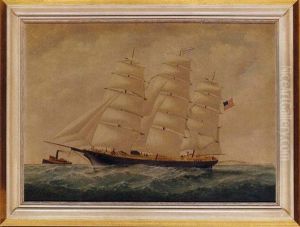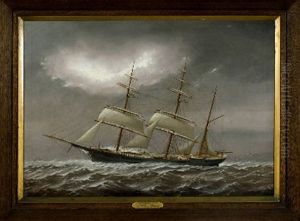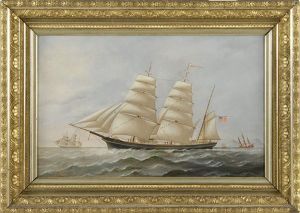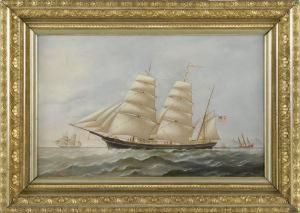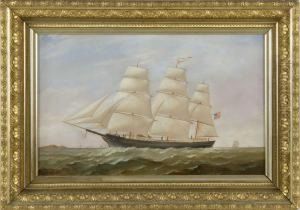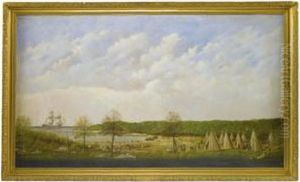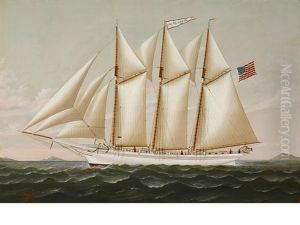Charles Sidney Raleigh Paintings
Charles Sidney Raleigh was a British-born American painter known for his maritime scenes, particularly those depicting life at sea and nautical adventures. Born on September 2, 1830, in the village of Shepperton, Middlesex, England, Raleigh started his life with the sea early, going to sea at the age of nine. His experiences aboard various ships, including whalers, merchant vessels, and in the British Navy, would later become the primary inspiration for his art.
Raleigh moved to the United States during his adulthood, and it was in America that he began to seriously pursue his career as an artist. His lack of formal training did not deter him from developing a distinctive style that captured the essence of seafaring life with accuracy and a touch of romance. He settled in Massachusetts and was particularly active in the New Bedford area, which was a bustling whaling port during the 19th century. This environment provided ample subject matter for his paintings and was also a place where his work found an enthusiastic audience.
His paintings are characterized by their detailed depiction of ships and the sea, often capturing the perils and beauty of maritime life. Raleigh's paintings also frequently include human figures, which he portrayed with a sense of individuality and character that resonated with viewers familiar with seafaring life. Despite his lack of academic training, his works were admired for their technical skill and emotional depth.
Raleigh's artwork gained recognition during his lifetime, and he exhibited his paintings at various local institutions and galleries. His works have since been collected by maritime museums and private collectors who appreciate his authentic portrayal of 19th-century maritime culture.
Charles Sidney Raleigh continued to paint well into his later years, passing away on April 23, 1925, in New Bedford, Massachusetts. Today, his works remain a valuable record of maritime history and are admired for their historical value as well as their artistic merit. They are a testament to Raleigh’s life at sea and his ability to translate that experience onto canvas.




